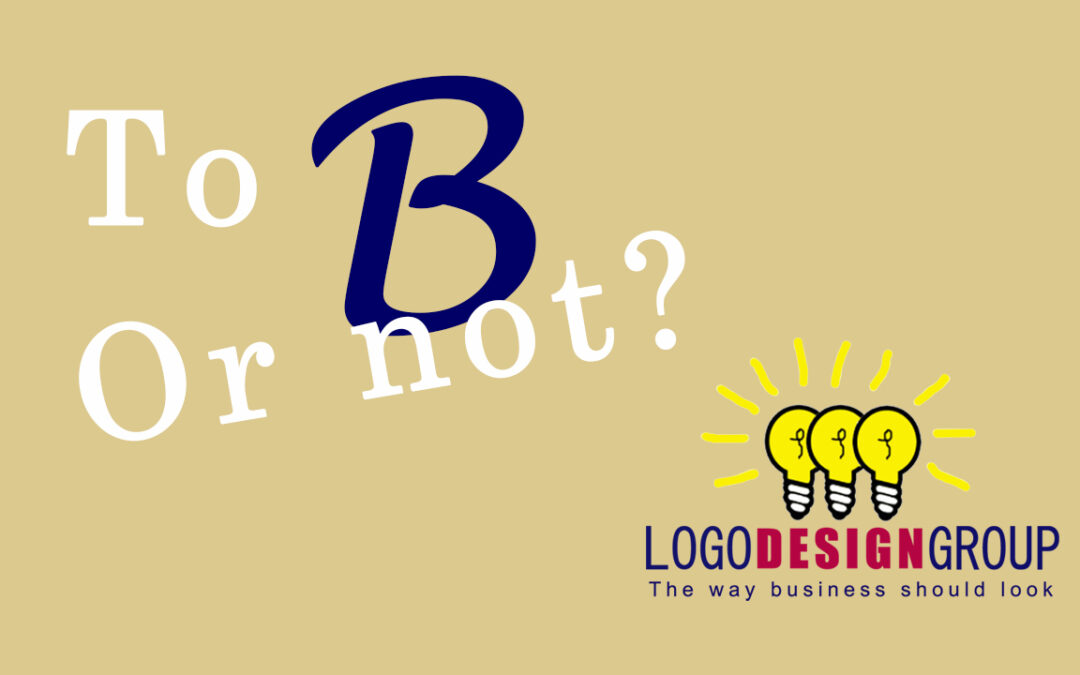To B or not to B
 I just had a call from a long-time client. He has been with us for a few years, knows our philosophies on brand development, and is a former Fortune 100 sales manager. All of that makes his call even less explicable. In short, he should know better than to suggest this identity crisis.
I just had a call from a long-time client. He has been with us for a few years, knows our philosophies on brand development, and is a former Fortune 100 sales manager. All of that makes his call even less explicable. In short, he should know better than to suggest this identity crisis.
We’ve worked for a couple of years on establishing his sports training brand. The name and logo are solid. In his market segment, his brand is known, identifiable, and well-respected. He has branched out from the service industry that was his core business into some other consumer products bearing the same logo and identity. They have all been successful, mostly because they piggybacked on the success of the original brand application.
Today, he says he wants to launch a clothing line. The clothing is specialized and would be marketed to the existing market. Instead of using the established brand and identity, he want’s to call it simply “B.”
“B?”
“Yes. B.”
“Well, that’s great, but why?” I asked.
“I just think it would be cool,” he replied happily. No, giddily.
“What about the brand you already have? The one that everyone knows?”
“I don’t know. I just like ‘B’.”
I like B, too. It is one of my favorite letters. It is NOT, however, my favorite choice for a clothing line targeted at an existing customer base that identifies with the existing brand. Could it work? Yeah. It could. But, the question isn’t whether it will work but rather if it will be a greater success to tie the clothing line to the well-established, well-respected brand that the client has worked years to craft. The customer base would be a simple hand off from one part of the brand family to another. Simple. No mess. No real effort.
Let me explain.
The closest equivalent to what he is thinking would be this. Back when Nike made only shoes (yes, they really did make JUST shoes at one point), they thought it would be a good plan to start selling other products, too. Shirts, socks, hats, even lacrosse sticks. Did they start a whole new company called “N” to sell this stuff? Nope. They just stuck their logo on other products. You see the same thing with Remington–guns and hunting clothes. Under Armour–shirts, to start with, now everything you can imagine.
I can see it in a specialized situation.
Royal Robbin made durable pants for the mountain climbing community. Great pants, but it’s a very small community, indeed. Someone saw the great stuff and bought the company, decided that the cool-looking pants that were designed for climbing the toughest mountains (class 5, category 11) would look equally cool on other daring men and women. He picked the name of the trouser, 5.11, and changed the name of the company to match it. He then targeted a whole NEW market–law enforcement and paramilitary–and now 5.11 is one of the biggest names in the tactical world.
But that’s really a horse of a different color. It’s chasing a new market–totally different from the original one–with an existing product. It’s NOT going after an existing market with a new product.
We could certainly start a new campaign that would launch a new product line. We’ve done that countless times with good success. And if this were a brand that had nothing to do with the established market, I’d be all for that. It would be pricey, of course, and the client is not known for his deep pockets and huge budgets, so it’s not really a smart investment on his part.
It’s blog-worthy simply because it is important to get clients to think logically and strategically and NOT get carried away by an idea that has no basis in business and creates an identity crisis. This would be an excellent time to make a pros and cons list before placing all your bets on B. Or any other letter, really.

